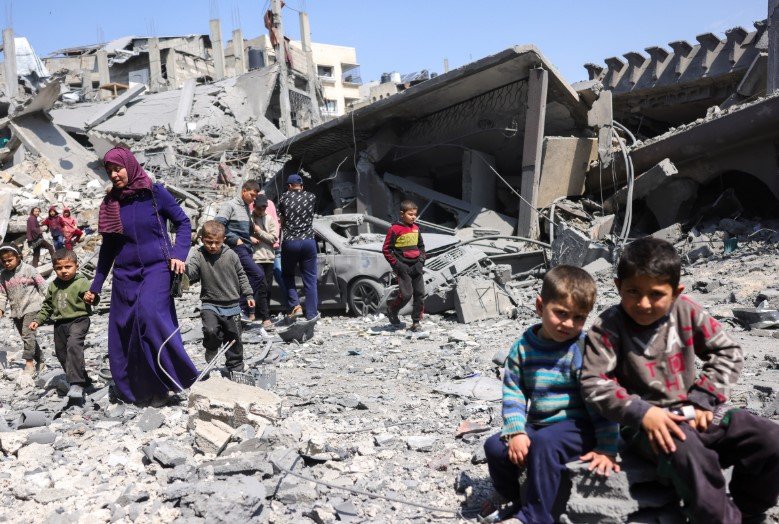Israeli officials have accused Hamas leaders of trying to flee the Gaza Strip for safety, even as the group tells local residents to remain in place amid heavy fighting. This claim, made public on September 14, 2025, highlights what Israel calls blatant hypocrisy, with several top Hamas figures requesting safe passage for themselves and their families while the Israeli military pushes for mass evacuations from Gaza City.
Israel’s Claims of Hamas Hypocrisy
Recent statements from Israel’s Coordinator of Government Activities in the Territories point to a stark contrast in behavior. While Hamas publicly urges Gaza City residents not to leave their homes, claiming it protects them from Israeli attacks, some leaders have quietly sought ways out.
This comes during intense preparations for a major Israeli ground operation in Gaza City. The military has issued evacuation orders to about one million people in the area, warning of increased airstrikes and ground fights against Hamas operatives.
Officials say this double standard shows how Hamas uses civilians as human shields. In posts on social media, Israeli authorities shared details of these requests, which they denied in most cases.
The accusations fit into a pattern seen throughout the ongoing conflict, where Hamas has been criticized for prioritizing its own survival over civilian safety.

Key Hamas Officials Named in Escape Attempts
Israeli sources have identified specific individuals involved in these efforts to leave Gaza. These requests were submitted through official channels, but most were turned down.
Here is a list of the named officials and their actions:
- Muhammad Madhoun, a minister in the Hamas government, asked for permission for himself and his family to exit.
- Isma’il al-Ashqar, head of Hamas’s Foreign Affairs and Security Committee, sought safe passage for his family.
- Alaa a-Din Bata, leader of a Hamas government committee, requested evacuation for his relatives.
- Anwar Atallah, a Gaza City Council member, successfully left two weeks ago with his family to an unnamed country via Jordan, with Israeli approval.
These details emerged amid reports that Hamas is actively discouraging civilians from heading south, where humanitarian aid is more accessible.
Evacuation Challenges and Civilian Impact
The Israeli military reports that around 300,000 people have already left Gaza City since the latest evacuation calls began last week. However, many more remain, facing risks from ongoing battles.
Hamas has launched campaigns to keep residents in place, spreading claims that southern areas lack space or resources. Israeli officials counter this by noting expansions in humanitarian zones, like a new 15-dunam plot cleared in Khan Yunis for displaced people.
Civilians caught in the middle describe fear and confusion. Some report Hamas operatives blocking paths south or using threats to prevent movement.
Humanitarian efforts continue despite the chaos. In the past week, over 1,200 aid trucks entered Gaza, carrying food and supplies, according to recent updates.
| Evacuation and Aid Statistics (As of September 15, 2025) |
|---|
| Estimated Population in Gaza City Before Orders: 1 million |
| Number Evacuated: 300,000 |
| Aid Trucks Entered Last Week: 1,200+ |
| Patients and Caregivers Exited for Treatment: Hundreds |
| Humanitarian Zone Expansion: 15 dunams in Khan Yunis |
This table shows the scale of the operation and the push to provide safe areas.
Ongoing Military Operations in Gaza
The Israeli Defense Forces are stepping up actions around Gaza City, targeting high-rise buildings used by Hamas for operations. Recent strikes have hit towers in neighborhoods like Tal el-Hawa, with the military claiming they housed weapons or command centers.
In nearby Beit Hanoun, troops killed at least 11 Hamas operatives in tunnel fights last week. This follows earlier claims that the local Hamas battalion was defeated, but some fighters have returned or hidden underground.
Airstrikes and ground raids aim to weaken Hamas’s hold, but they also raise civilian risks. Israel warns that without evacuations, more lives could be lost in crossfire.
These moves tie into broader efforts to free hostages and end Hamas control, amid a conflict that has displaced millions since October 2023.
Broader Context of the Israel-Hamas Conflict
This development unfolds against a backdrop of escalating tensions. The war, sparked by Hamas attacks in October 2023, has led to thousands of deaths and widespread destruction in Gaza.
International leaders, including from the US and Qatar, have called for ceasefires, but recent Israeli strikes in Doha against Hamas targets have complicated talks. Qatar, a key mediator, hosted an emergency summit on September 14, 2025, to discuss responses.
Israel defends its actions as necessary to counter threats, while critics accuse it of endangering civilians. The UN has passed non-binding resolutions urging a two-state solution, but on-the-ground realities remain dire.
Mental health impacts are severe, with over 10,000 Israeli soldiers treated for issues like PTSD since the war began. In Gaza, famine risks persist despite aid inflows.
International Reactions and Future Implications
Global responses vary. US officials, including Secretary of State Marco Rubio, visited Israel recently to discuss the situation, emphasizing peace efforts. President Trump warned Israel to handle allies like Qatar carefully.
Arab and Muslim leaders at the Doha summit condemned Israeli actions, vowing to push for accountability. Meanwhile, anti-Israel protests have disrupted events worldwide, from cycling races in Spain to rallies in Berlin.
Looking ahead, if more Hamas leaders flee, it could signal weakening internal control. For civilians, the priority is safe passage and aid.
As this story develops, share your thoughts in the comments below. What do you think about these claims of hypocrisy? Spread the word by sharing this article to keep others informed on the latest from Gaza.
